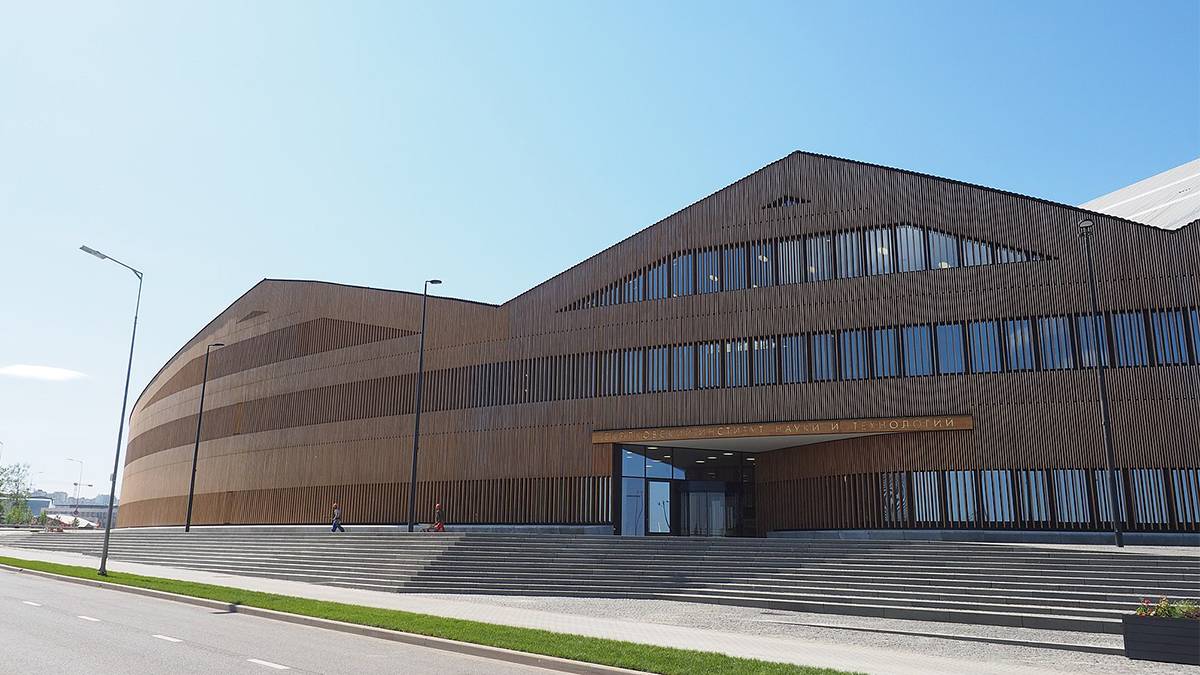
A universal optical logic element NOR (from the English NOT – logical negation and OR – logical addition “OR”) based on polariton condensates was developed by scientists from the Skolkovo Institute of Science and Technology and the University of Wuppertal in Germany, the Skoltech press service reported on July 26.
The work was carried out within the framework of the project “Optical lateral logic gates based on polariton condensates in perovskite films” under the scientific supervision of Skoltech Vice President for Photonics Pavlos Lagoudakis, winner of the Challenge Scientific Award, Director of the Center for Photonics and Photonic Technologies and Head of the Hybrid Photonics Laboratory.
The developers presented their results in the paper “Cascading, room-temperature, all-optical polariton universal gates,” published in the journal Nature Communications. The results of the study were a step closer to achieving the long-held dream of creating optical computers that run hundreds of times faster than conventional electronic ones.
The newly created optical NOR gate operates at room temperature, has multiple inputs, operates hundreds of times faster than its electronic counterparts, and because it is all-optical, requires no electrical current to operate.
These elements can be connected in a circuit, i.e. in cascade, which allows the implementation of various logical functions. Thus, based on the new NOR gate, it is possible to create any type of logical elements necessary for optical microcircuits, creating computing devices that operate without the participation of electric current.
The first author of the article, Deputy Head of the Laboratory of Hybrid Photonics Denis Sannikov, spoke about the problem solved by the researchers:
“For the first time in practice, we have implemented a cascaded optical universal logic gate, which means that our experiments open the way to the creation of a completely optical computer. The fact is that modern computers have a limited operating frequency of the electronic processor to several GHz. Since the 1980s, in order to increase the speed of calculations, manufacturers have constantly increased the processor clock frequency, but then they were faced with a fundamental physical limitation: if you increase the processor frequency above several GHz, the processor simply turns into an electric heater. ”.
In 2019, the Hybrid Photonics Laboratory developed the world’s first ultrafast room-temperature optical polariton transistor, which is the building block of optical polariton logic circuits. Polariton transistors can be used at frequencies up to 1 THz, which is about 300 times faster than their electronic counterparts.
In another study conducted in the laboratory, scientists demonstrated that a single photon is enough to control an optical polariton transistor, something impossible for any other optical system.
Logical elements, otherwise called gates, perform various logical operations on the device: conjunction (logical “AND”), disjunction (logical “OR”), negation (logical “NOT”), etc. A computer’s processor consists of billions of transistors that form these logical elements. When some input signal is supplied, they perform internal calculations and produce a result, which can also be an image on the screen.
Each input of a logic gate receives a signal with a logic level of “0” or “1”, and at the output the gate returns a “0” or “1” signal depending on the signals received and the function it performs. Electronic gates typically have 2 to 8 inputs and 1 to 2 outputs, but Skoltech’s new universal optical gate successfully handles 12 inputs, increasing the design’s competitive advantage.
“To create a universal gate, we use the special properties of “liquid light,” as polariton condensates are now called, capable of amplifying weak optical signals tens of thousands of times. To create such “liquid light,” we first have to condense polaritons into the ground state. If we draw a parallel, it’s like water vapor in the air, which turns into water on cold window glass.” — said Denis Sannikov.
He added that the researchers went further and learned to condense polaritons into a non-fundamental state, in which they had more energy. This made it possible to solve a long-standing problem of all-optical logic elements: turning off an optical signal using light and getting a zero from a logic one.
“Photons“, the scientist explained, ” Unlike electrons, they do not interact with each other, and therefore the creation of such an optical logic converter has long remained a physical and technological challenge. We have managed to solve this problem by using the unique properties of “liquid light”, which combines the properties of photons and electrons, which made it possible to create a universal optical polariton gate.”.
Source: Rossa Primavera
I am Michael Melvin, an experienced news writer with a passion for uncovering stories and bringing them to the public. I have been working in the news industry for over five years now, and my work has been published on multiple websites. As an author at 24 News Reporters, I cover world section of current events stories that are both informative and captivating to read.
